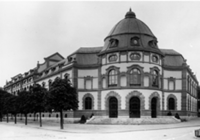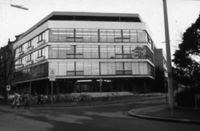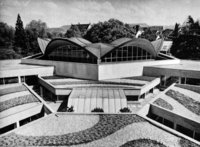The University Library
For over 400 years, the University of Basel’s books were housed in buildings that served or had served other purposes. And by the time the university moved into its own building in 1896, its book collections had been relocated several times. Initially, it was not even clear what a “university library” ought to be.
The first dedicated book storage site was a libraria in the Brabeuterium in the Lower College. From 1671 to 1849, university books were kept at the Haus Zur Mücke, though the library was open just two hours a week – as was still the case only recently. By the end of the 1820s, there was a sense that this site was too cramped, and in 1849, the library and the other collections were moved into the newly erected museum building, where they remained until 1896.
In 1896, the library finally received its own building, the grandiose structure designed by Emanuel La Roche located on the site of the former Spalen cemetery. Even before the Second World War, plans for another new building were made, but their realization was then indefinitely postponed. As an alternative, the Grand Council decided to expand the underground area of the book depot and to repurpose other spaces. Between 1959 and 1965, however, the new building plans were in fact implemented, and the new structure designed by Otto Senn was erected in several phases. This required the demolition of the representative and highly emblematic domed entrance building, to be replaced by the new, functionally designed piece of architecture.
Between 1849 and 1896, the book collection had grown from some 70,000 to 200,000 volumes; the current collection stands at approximately 3.5 million items. The new library building would still be far too small today had large collections not been housed elsewhere: the Medical Library in the Center for Teaching and Research (Zentrum für Lehre und Forschung, ZFL), the library of the Economic Science Center (Wirtschaftswissenschaftliches Zentrum, WWZ), the Swiss Economic Archive in the Jacob Burckhardt Haus at the train station, and the large library of the Biocenter in the Faculty of Science.





